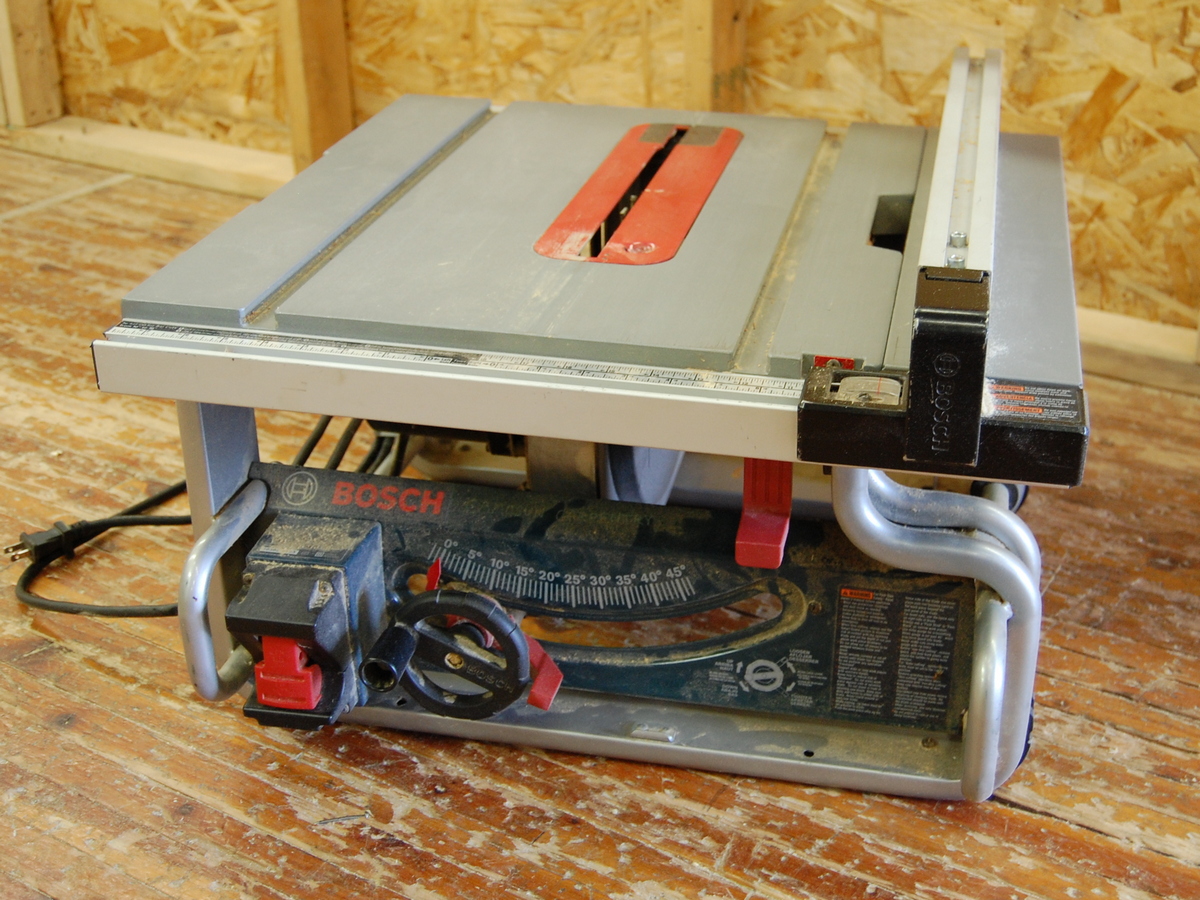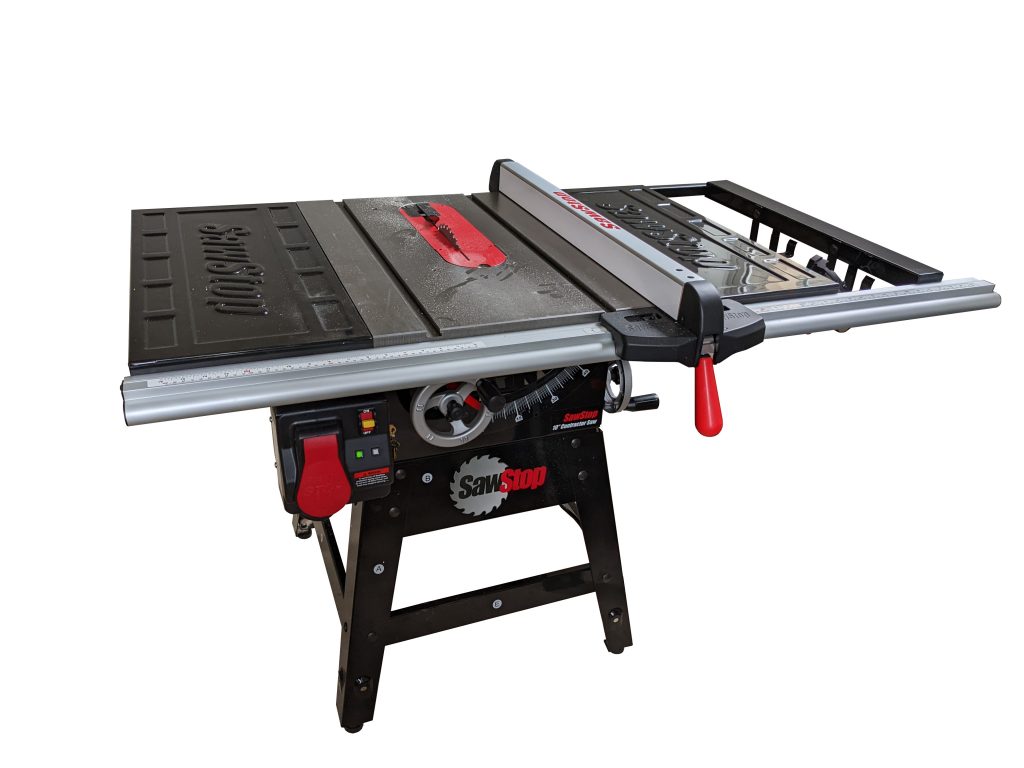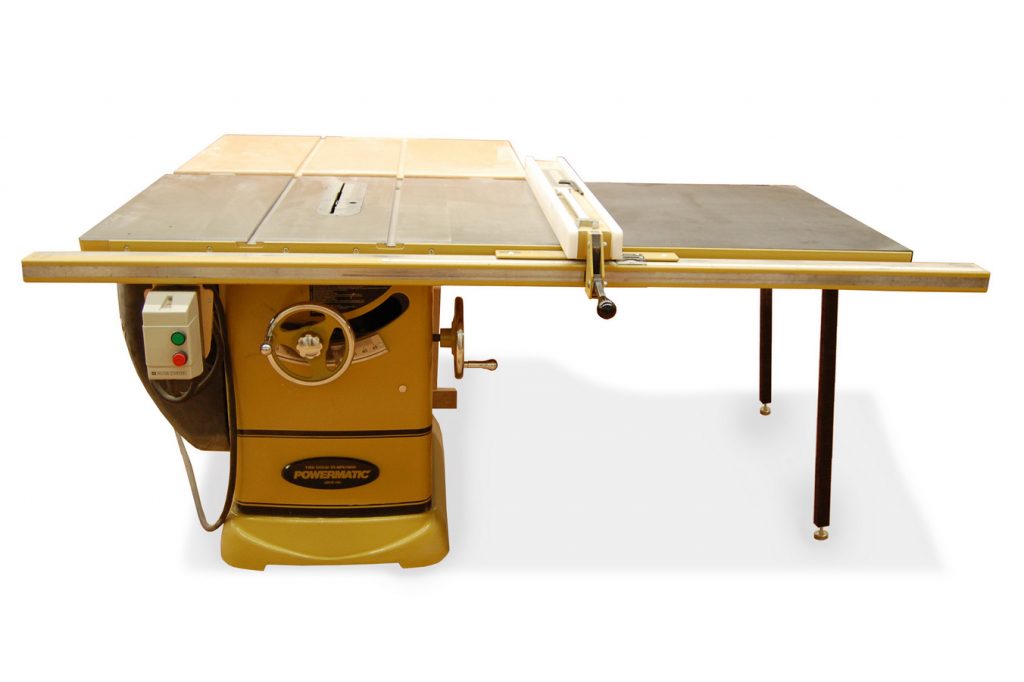Table Saw
The table saw is one of the most used machines in the shop. Its versatility makes it indispensable for machining both solid lumber and composite materials such as plywoods and MDF. Table saws are used for stock preparation and sizing. Plywood and composite materials are easily cut to accurate final sizes, solid wood may be resawn, ripped to width, or crosscut to length. The table saw excels at a variety of joinery operations from finger joints to mitres to dado/rabbet joints. Shaping operations are also possible, including cutting circles, bevels, and even cove mouldings.
Table saws are often designated by the maximum diameter of blade it can accommodate. Typical cabinet saws use a 250mm/10 inch diameter blade, while larger industrial sliding table saws typically use a 300mm/12 inch or larger blade. The maximum width of rip cut is another important designation. A larger capacity rip cut makes breaking down full sheets of plywood easier.
Types of table saws
Portable or Jobsite
Portable or jobsite table saws are small and lightweight, making them ideal for tasks such as on-site installation work. They are manufactured with lighter weight materials such as aluminum and plastics. These saws are easily transported and set-up, and are placed on saw horses or a work table. Some models have a folding base with wheels. They are powered with standard 110 volt household electricity. Because they have small motors, they do not handle heavy cutting and most have a small rip capacity.

Contractor
Contractor saws are larger than portable saws and are not usually transported to a job site, having been replaced by modern portable models. They are differentiated from a cabinet saw (described below) by the design of the saw base and the smaller motor. Contractor saws have an open-type base with legs; typically the motor hangs out of the back of the saw. Because of this design, dust collection tends to be difficult. The motors range in horsepower from 1.5 to 1.75, and may run on 120 volt or 240 volt electricity. Some models of these saws have features common to larger cabinet saws, including a quality rip fence and cast iron table. While they may be adequate for many joinery tasks, they can be underpowered when cutting through thick stock or hardwoods.

Cabinet
Cabinet saws are characterized by having larger, more powerful motors, a completely enclosed base, and robust construction. Motor size is typically 3 or 5 horsepower, with 5 horsepower models common. These saws run on a 240 voltage, which means a cooler running motor less likely to overheat. The motor is contained within the closed cabinet which allows for more efficient dust collection and keeps the internal components guarded. Cabinet saws have rip capacities up to 1350mm or 53 inches. A larger rip capacity is desirable when cutting large parts.

Panel Saw
Cutting sheet goods on a cabinet table saw is achievable, but limitations with capacity and the size and weight of many sheet goods make it less than ideal. Panel saws are designed to cut these materials with ease and accuracy. There are two kinds of panel saws, vertical and horizontal. Vertical saws take up less floor space and differ from horizontal models in that the panel stays stationary against stops while the blade and motor assembly move to complete the cut. Low cost vertical panel saws are often seen in hardware stores where they are used to rough cut customer material. Industrial vertical panel saws are used in large production facilities. They are highly accurate, can cut multiple sheets at once, have scoring capabilities, and are often computer numerically controlled (CNC).
The horizontal panel saw or sliding table saw is similar to a cabinet saw, but has a large sliding table on the left side of the saw blade. This type of saw is commonly found in cabinet and furniture shops as it has the versatility of a standard table saw as well as the ability to quickly and accurately cut sheet goods. The sliding table is designed to travel close to the blade, and has a long crosscutting fence with several moveable stops. The material to be cut is place on the table and travels on it throughout the cut. Another feature found on panel saws is the addition of a scoring blade unit. This is a small secondary cutter that runs ahead of the main saw blade to score the bottom of veneered and melamine sheet goods that are prone to chipping.
A sliding table saw is often designated by the length of its table, which is related the size of sheet goods it can cut. These saws are available with sliding tables that have a cutting capacity from 4 feet to 12 feet long. They usually have larger diameter blades, ranging from 315 mm to 400 mm or 12 to 16 inches.


